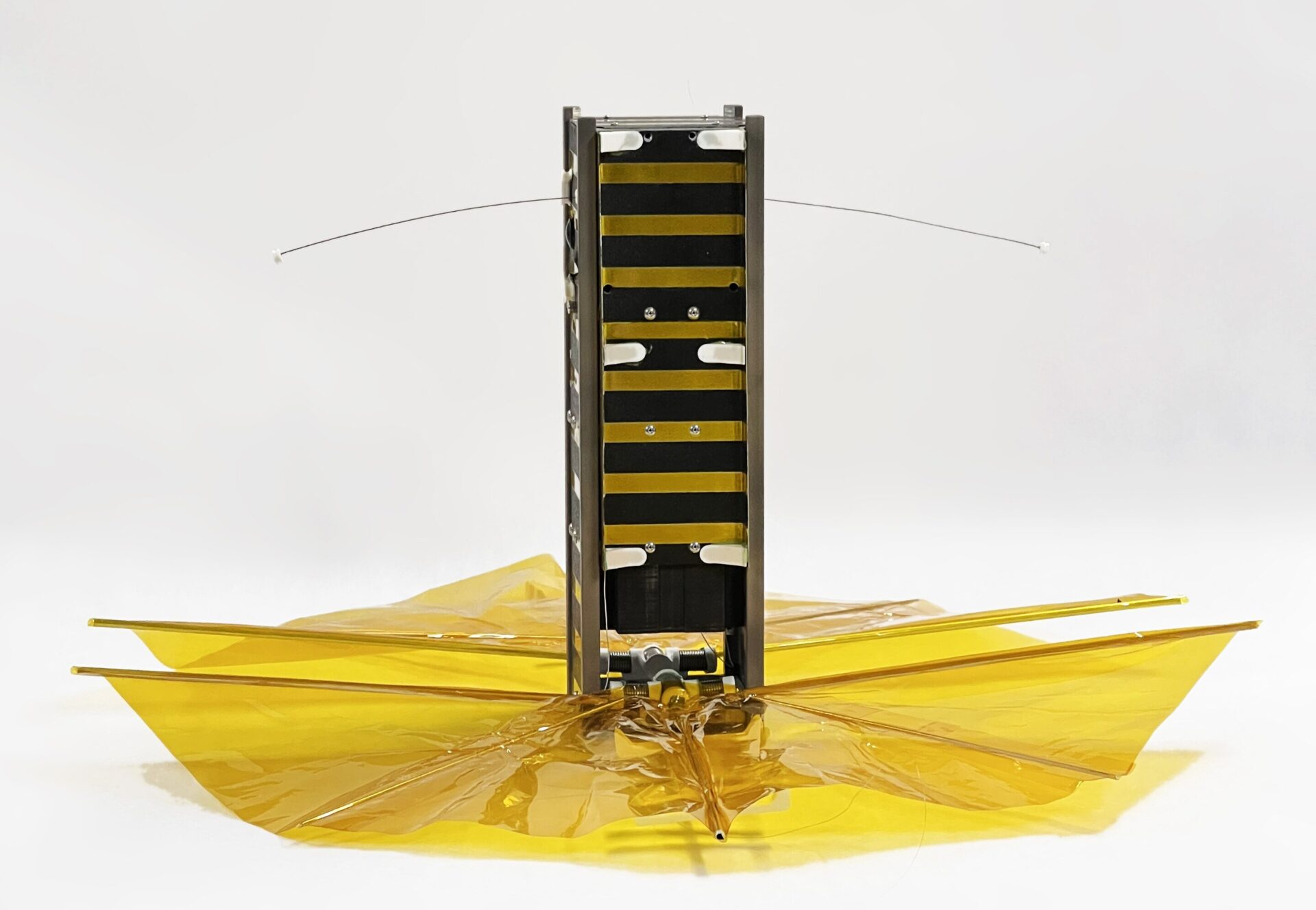
Visualisation of the objects in orbit around the Earth.
Credit: Professor Hugh Lewis.
Southampton researchers have developed the world’s first robust method for estimating the value and mass of this space junk.
A fully circular economy for space – removing space junk and reusing or recycling it – is a viable possibility to safeguard the future for satellites and space exploration, according to new research from the University of Southampton.
The research estimates there is billions, potentially trillions, of dollars’ worth of recyclable materials, in the form of space junk (mission debris and defunct satellites), orbiting the Earth. Knowing what is ‘out there’ will enable viable solutions to the growing problem to be effectively and justifiably pursued.
Space junk is a form of pollution that poses a threat to future space exploration and satellites – which we rely heavily on here on Earth.
As of January 2021, the US Space Surveillance Network reported 21,901 artificial objects in orbit around Earth, including almost 4,500 functioning satellites. But these are just the objects large enough to be tracked. There is also estimated to be more than 128 million pieces of debris smaller than 1cm, more than 900,000 pieces measuring 1cm to 10cm, and 34,000 pieces larger than 10cm.
Ian Williams, Professor of Applied Environmental Science, and Applied GIS and Remote Sensing Master’s graduate Ryan Leonard have developed a method to estimate the value and mass of orbital debris – providing a case for a circular economy.
“If the financial value of retrieving space debris is high enough, investment into the technology to do so is justified,” said Professor Williams.
Through their research, Professor Williams and Mr Ryan calculated the reuse of space junk could have a net value of between $570 billion and $1.2 trillion.This amounts to somewhere between 5,312 and 19,124 tonnes of scrap metal. Active debris removal (ADR) – such as the plasma thruster invented by the University of Southampton’s Dr Minkwan Kim, which is designed to safely deorbit end-of-life satellites – is one possible solution.
Professor Williams added: “The development of in-orbit services, such as extending the life of inactive satellites, or the advancement of ADR, will be crucial to solve the orbital debris problem. But, with this, a future circular economy for space may be financially viable, with potentially beneficial consequences for risk reduction; resource efficiency; additional high-value employment; and climate-change knowledge, science, monitoring and early warning data.”
Original Article: Circular economy to tackle space junk
More from: University of Southampton
The Latest Updates from Bing News
Go deeper with Bing News on:
Circular economy for space
- Business News Live: Market Opens In Red, Sensex Slips Under 73,150, Nifty Drops About 100 Points
Please follow this space for all the breaking news and latest updates from the stock market, economy, and corporate world ...
- Cyclic Materials Expands Leadership Team For Next Phase Of Growth
Cyclic Materials, an advanced metals recycling company building a circular supply chain for rare earth elements and other critical metals, announced the ...
- Siegwerk and Borouge Collaborate to Develop Fully Recyclable Mono-Material Solutions
New partnership aims to drive the replacement of multi-material packaging with advanced mono-material structures to to advance circular economy and lower carbon footprint.
- Moriba Jah is paving the way for sustainable space exploration
The environmentalist and astrodynamicist is employing ancient technology to help safeguard the dark and quiet sky ...
- Sustainable, flexible, space-saving: graywater treatment with 3D textiles
Graywater in particular, i.e. wastewater from showers, bathtubs and washbasins, offers great potential for further use. It can be brought to service water quality on site and reused for flushing ...
Go deeper with Bing News on:
Space junk
- Japan captures 1st image of space debris from orbit, and it's spookily stunning
A new Japanese mission to photograph space junk from orbit marks a milestone in orbital debris cleanup efforts.
- Junk Removal in Friant, CA: Simplifying Your Space
At California Junk Removal and Hauling, we understand the importance of a clean and clutter-free environment. With our ...
- This SpaceX Veteran's 'Tony Stark' Technology Aims to Tackle the Space Junk Problem
Portal Space Systems came out of stealth this week with more than $3 million in funding to build a spacecraft capable of rapidly moving satellites.
- Wow! Private space-junk probe snaps historic photo of discarded rocket in orbit
"Behold, the world's first image of space debris captured through rendezvous and proximity operations during our ADRAS-J mission." Space junk just got an epic close-up. The ADRAS-J satellite, operated ...
- Chinese Astronauts Performed Emergency Space Station Repairs Following Debris Impact
China's Tiangong space station partially lost power after its solar panels were struck by an unidentified object late last year.










